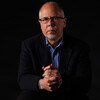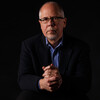"It's not that I don't want to pay tithe," Jim exclaimed. "It's just that when I drop the envelope into the plate I have no idea where it goes!"
Jim represents a lot of us. We're willing to sacrifice for the cause of God — but not for the whim of bureaucracy. So we really want to know: When the envelope disappears into the maw of our church's structure, where does it go? What does it do? And who decides? If tithe collected here in the Northwest (see Figure 1) isn't used for ministry we can measure, what in the world is it good for? Let's answer some of the basic questions about tithe.
What do we use tithe for?
Following general guidelines initiated by Ellen White's early counsel, the church earmarks tithe primarily to support the preaching, pastoral, evangelistic work of ministers and Bible teachers. In addition, because Adventist schools are an ongoing ministry to students, tithe funds are used to subsidize selected administrative salaries and a percentage of salaries for teachers. Tithe provides for the support of local, union, division and General Conference services which facilitate ministry. Tithe is not used to purchase property, build churches or fund the general operations of churches or schools, since churches and schools have other means of raising money such as offerings and special project donations.
Why can't the tithe just stay with the local church?
It provides support for your local church through the funding of your pastor(s). But, throughout most of its history, the Adventist Church has not used a "congregational" model for its structure. In other words — broader policies and procedures are determined not by the local church but by a representative body of the church at large. The world church has voted repeatedly to continue the plan that flows tithe funds globally. Throughout the years, this worldview of our church's mission has enabled membership to expand from a North American base in a crescendo of global growth — something Ellen White encouraged. She wrote that the "work of faithfully bringing in all the tithes, would supply laborers for both home and foreign missions."1
So when I drop my tithe envelope into the plate, where does it go?
Any local conference or church offerings you put in stay local, whereas tithe begins a carefully thought-out but complex journey. First, your local church treasurer sends all tithe funds to the local conference which then starts a chain reaction, (see Figure 2). Keep in mind our figures here are approximate,
1) The local conference retains about 64 percent for its own region, including pastoral salaries;
2) it sends 9 percent to the North Pacific Union Conference for ministry throughout the Northwest, plus another 25 percent to be passed on by the NPUC to the North American Division;
3) The NPUC passes on the 25 percent, with 8 percent going to the NAD, 8 percent going to the General Conference for the world church budget, a little more than 7 percent going to continue funding the defined benefit retirement plan for elderly retirees and nearly 3 percent for health-plan coverage for those retirees;
4) A final slice of nearly 1 percent is sent to the NAD for a special assistance fund to help local conferences that have a low-tithe per-capita ratio or low membership — in the NPUC it's Alaska and Montana — as well as to assist a portion of Northwest ethnic work.
So all the local conference gets is 64 percent of the tithe?
Actually, they receive much more than that. For instance, while the NPUC also forwards funds to the NAD and GC for retirement and medical coverage, it uses 60 percent of all tithe funds from local conferences to support Northwest ministry. Those retained funds in 2009 amounted to around $4.6 million and a significant portion didn't stay at the NPUC. In fact, $2.4 million were distributed as Northwest appropriations — including nearly $1 million to Walla Walla University and $330,000 in direct appropriations to local conferences, including subsidies for ministerial interns. Those same NPUC appropriations also included $335,000 to help ensure financial accountability in the form of auditing services for conferences and academies. Local conferences pay only 25 percent of the auditing costs for their offices and senior academies because the NPUC covers 25 percent and the remaining 50 percent is provided by the NAD.
So, when all is said and done, some conferences receive back a significant portion of what they initially sent on to the NPUC, NAD and GC in the form of tithe.
Wouldn't it be better if each member could dictate how their tithe is used?
Our church has a plan that many have envied — sharing surplus resources where there are few; sending funds to areas and needs that may not win a popularity contest, but are nonetheless essential. It's an equitable plan that seeks to share available resources from areas that have much to those that have little. God has provided worldwide growth because of the willingness of Adventist members in North America to give according to what we used to call "disinterested benevolence" — giving without regard for what we personally get back.
And, don't forget, if your local church is registered with the Adventist Giving online resource, you can electronically send your tithe as you would do any similar electronic banking. And, it integrates into the system as if you dropped your tithe envelope into the plate at your local church.
Where can I get more information?
Did we raise more questions than we answered? The NPUC treasury department or your local conference treasurer will be happy to help you sort out additional answers with far more detail.
And, if you want to go beyond just paying tithe to really learn about Christian stewardship, check out the online seminar from Dick Hanson available as a link to this article at http://www.npuc.org/article.php?id=409 or via the bar code below on your mobile device.
1 Ellen White, The Review and Herald, Feb. 19, 1889.
When the envelope disappears into the maw of our church's structure, where does it go? What does it do? And, who decides? If tithe collected here in the Northwest isn't used for ministry we can measure, what in the world is it good for?
Our church has a plan that many have envied — sending funds to areas and needs that may not win a popularity contest, but are nonetheless essential. It's an equitable plan that seeks to share available resources from areas that have much to those that have little.















